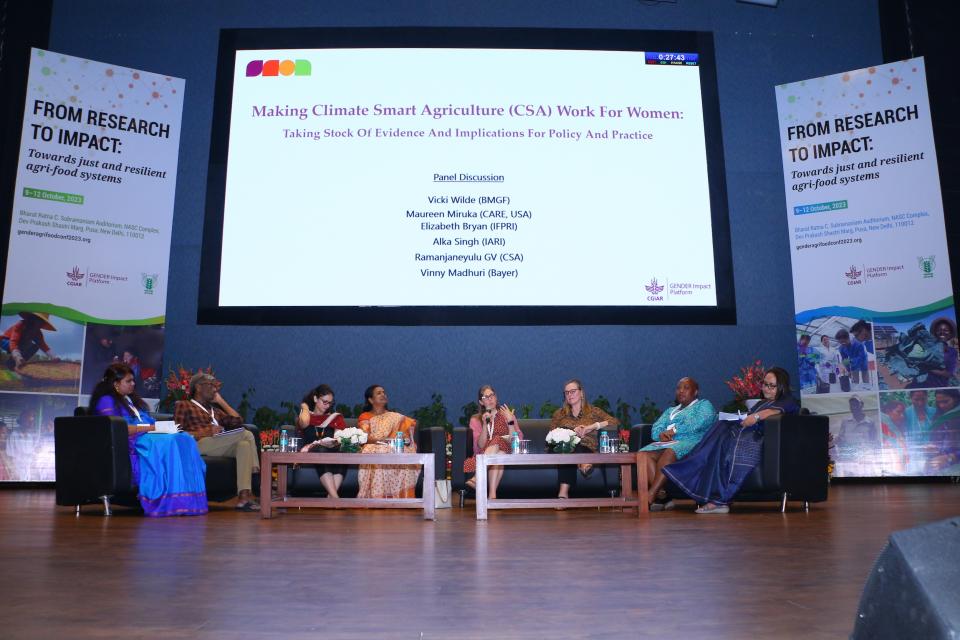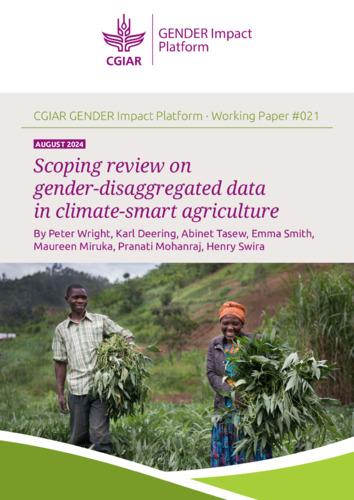Are We Missing the Mark? Gender and Intersectional Data Gaps in Climate Smart Agriculture
This article was first published by AgriLinks
In today’s world, food is a scarce resource for millions of people. Despite numerous efforts by individuals, organizations, governments and institutions to enhance food security, the World Health Organization (WHO) conservatively estimates that between 2030 and 2050 climate change is expected to cause approximately 250,000 deaths per year resulting from malnutrition, diarrhea and heat stress (WHO 2021). Women and girls often face the most severe impacts of food insecurity caused by climate change, often eating last and least. CARE’s analysis has estimated that 150 million more women were hungry than men in 2021 (CARE 2022).
To address global food insecurity, Climate-Smart Agriculture (CSA) has emerged as a paradigm aimed at enhancing agricultural productivity, resilience and sustainability. Over time, CSA has been adopted by development partners and governments across the globe. But does it really deliver its promises to the most vulnerable?
The CSA framework, as initially defined, includes three main objectives: (i) to sustainably enhance agricultural productivity and improve food security, (ii) to strengthen farmers’ resilience and their capacities to adapt to climate change, and (iii) to minimize or eliminate greenhouse gas emissions whenever feasible (FAO 2013; FAO and CARE 2019). Gender equality was not a primary focus during the development of CSA strategies, which may account for the limited investment in gender-equality initiatives within CSA programming. As a result, international agricultural research and development organizations have faced challenges in effectively incorporating gender-equality considerations into agricultural program processes and outcomes.
The Invisible Population
This brings us to the question – What is the importance of recognizing the gap in data disaggregated by gender and intersectional variables such as age and disabilities within CSA programming?
CARE conducted a review of CSA programming funded and sponsored by the CGIAR GENDER Impact Platform to highlight the significant risk of excluding, discriminating against, or perpetuating bias towards "invisible populations," as this could result in support that is neither needs-based nor rights-based. An evidence-based approach that prioritizes the collection, analysis, and application of disaggregated data is essential for enhancing impartiality and fostering equity within programming.
The scoping review on gender-disaggregated data in climate-smart agriculture conducted by CARE aimed to assess the availability of disaggregated data in Climate Smart Agriculture (CSA) programs, identify existing gaps, and provide recommendations for bridging these gaps to mitigate gender inequalities that hinder women and girls from fully benefiting from CSA initiatives. The scoping review adopted a qualitative approach, using nine key informant interviews to provide a sample of the current situation, supplemented by an in-depth desk review of literature to provide insights into the evolution of the CSA–gender nexus over time.


